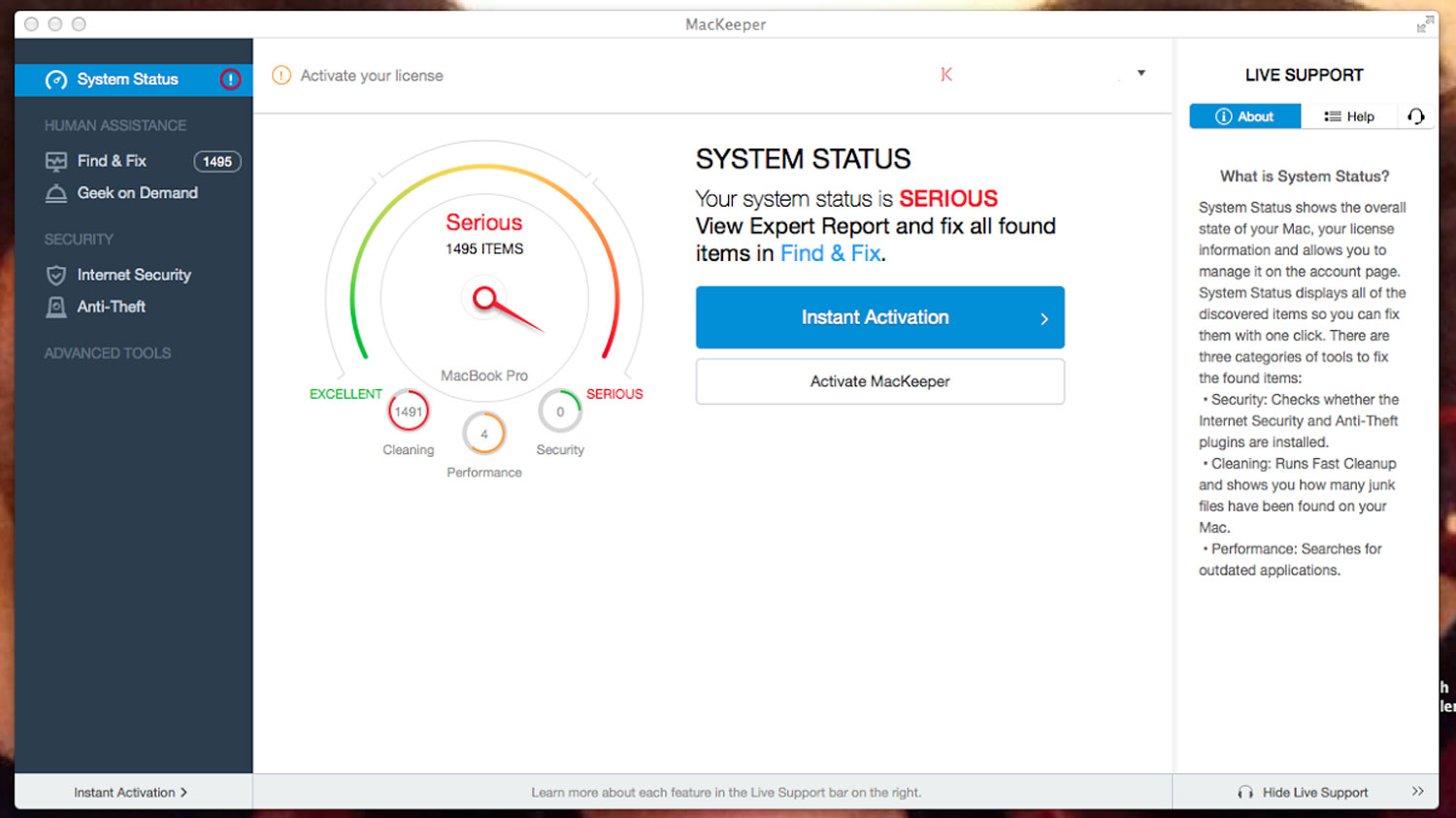How to Get Rid of MacKeeper
If you have MacKeeper on your Mac, you need to get rid of it ASAP. It requires a few extra steps beyond the standard uninstall process.

MacKeeper was in the news due to the settlement of a class-action lawsuit against it, which, according to IDG, resulted in a remarkably high rate of private citizens filing for refunds out of a $2 million pool. (If you paid for MacKeeper before July 8, 2015, you can file for a refund here.)
Unfortunately, the settlement has done nothing to stop the barrage of MacKeeper scareware ads, which are created by third parties that collect a 50 percent commission on sales and which recently snared some of our own relatives. Anecdotes from Mac user forums and Mac repair shops report that MacKeeper often slows down Macs to a crawl.
MORE: Best Mac Antivirus Software
Here's how the ad campaign works: You'll see a pop-under ad while surfing the Web. It will say that your Mac is infected with malware and that you have to install MacKeeper to clean your machine. If you do decide to install MacKeeper, it will ask for your password, which may let it embed itself deep into the guts of your machine. At some point, it will stop being free and demand payment, which can range from $40 to $95 per year.

In its defense, MacKeeper is not actually malware; it's just very aggressive and possibly dishonest. In a test conducted by Austrian lab AV-Comparatives on behalf of IDG, MacKeeper "found" 500 MB of "dangerous" software on a fresh, fully patched installation of OS X 10.10 Yosemite. MacKeeper will indeed scan your system for viruses, but it uses the Avira security scanner to do so, PC World reports. You can get Avira Free Antivirus for Mac for nothing and avoid paying MacKeeper for being the middleman.
Unfortunately, the program can be as persistent as a 1950s horror-movie monster, and simply uninstalling MacKeeper won't remove its traces from your system. Getting rid of the program takes a few extra steps, which Macworld outlines.
First off, open up MacKeeper, then quit it (activating an account is not necessary). This will ensure that the program is closed. After that, drag the program into the Trash. If you're not on an administrator account, you'll need to enter an administrator's password. This will cue the uninstall process, which is self-explanatory.
Get instant access to breaking news, the hottest reviews, great deals and helpful tips.
Next, go into your username folder, then Library --> Application Support. You'll find a folder called MacKeeper Helper. Toss this folder into the Trash, and it'll also take care of a NoticeEngine.plugin file. Empty your Trash right away, then restart your computer. That should take care of MacKeeper, and you should strongly consider replacing it with Avira, or another legitimate antivirus product.

Marshall Honorof was a senior editor for Tom's Guide, overseeing the site's coverage of gaming hardware and software. He comes from a science writing background, having studied paleomammalogy, biological anthropology, and the history of science and technology. After hours, you can find him practicing taekwondo or doing deep dives on classic sci-fi.
